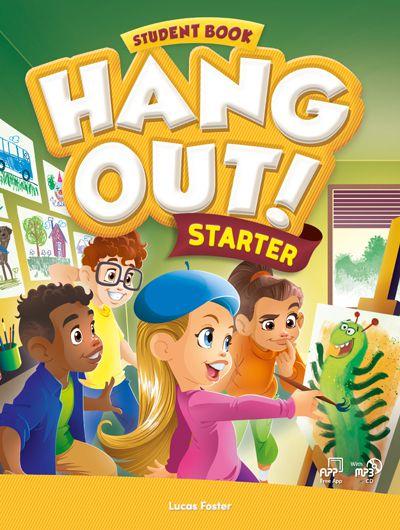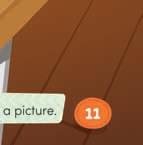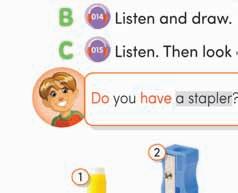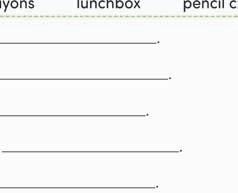









































Additional
Additional


































Additional
Colorful images introduce the first eight vocabulary items to students.


















Simple monolog by one of the characters introduces the vocabulary and structure of the unit in a situational context.

Follow-up activity has students listen to the eight vocabulary items again and find them in the main picture.



Fun song provides an exciting opportunity for students to learn the target structure and vocabulary of the unit.













Speaking activity reinforces the learning objectives.



Review song allows students to produce the learned vocabulary and structure and is followed up with a comprehension activity.
















Short reading presents the structure and vocabulary in a new context.




Comprehension activity strengthens and confirms the students’ understanding of the new vocabulary and structure.
Preparation activity helps students get ready for the speaking task with puzzles, stickers, drawing, coloring, and more.







Speaking task requires students to share information about part A, and allows teachers to monitor students’ comprehension and use of target structure and vocabulary.









Comic-book style story lets students follow the main characters in amusing situations.










Natural language and situations introduce the unit’s secondary vocabulary set and structure.








Comprehension activity checks students’ understanding of the story and focuses on the key vocabulary and structure.



More colorful images introduce the second eight vocabulary items to students.








Follow-up vocabulary activity helps students recognize the key words. Picture-based substitution drill provides practice using the vocabulary and structure.







Exciting chant reinforces the vocabulary and structure.



Reading passage connects the unit theme, vocabulary, and structures with an interesting topic. Cross-curricular learning (CLIL) and intercultural learning content are featured with a magazine-style presentation.




Big, colorful images aid comprehension and provide opportunities for expansion activities.






























Linked-skills activity incorporates listening and reading; students listen and determine whether statements are correct or incorrect.


















Summary activity checks the students comprehension of the reading passage and provides the basis for an overall summary of the content.

Phonics activity, in levels 1 & 2, builds the students’ spelling skills and ability to sound out words.









Writing graphic organizer provides a framework for a short writing project. Students can plan their project with teacher assistance and complete it on the portfolio worksheet in the Workbook.







Picture-based vocabulary activity reviews the unit vocabulary while consolidating writing skills.










Awareness-building activity reinforces the key structure.









Listening activities are included to ensure students build familiarity with the vocabulary and structure in a range of contexts.





Activities modeled on major English assessment tests build students’ test-taking skills and abilities.





Coloring activities are included to stimulate students’ creativity.








Short listening passage presents the unit vocabulary and structure in a different context.

















Listening activities progress from focusing on overall understanding to specific details.
Listening activity builds recognition and awareness of grammatical structures.




Writing activity builds students’ familiarity with the structure of the unit and provides guidance through a wide range of activity types.








Copying and tracing supports lower-level learners and aids in building students’ confidence.








Fun games, such as word puzzles, word searches, and crosswords, help students to reinforce their new vocabulary.

















Key dialog pairs of the unit are reviewed and consolidated through listening and writing activities.




Listen and repeat section builds automaticity.











Listening passage mirrors and expands on the content in the Connect reading section of the Student Book.
Easy-to-understand activities assess students’ understanding of the overall meaning and details in the listening passage.



















Additional phonics activities build upon the sounds learned in the Student Book. Short reading activity builds students’ confidence with the target sounds.
















Portfolio page at the back of the Workbook allows students to demonstrate what they have learned with a final output for the unit.


Coloring and drawing activity lets students personalize their learning.









Writing framework assists students in creating complete sentences and provides lower-level learners with added confidence.
















Check up section provides a checklist of the learning objectives for the unit and helps students, teachers, and parents track what students have learned.












Characters: Steven, Clare, Alex, Brian, Emma
Colors: pink, green, blue, yellow, black, orange, red, purple


: 1 to 20
Shapes: square, circle, triangle, diamond, rectangle
Things for school
Saying what
don’t
have
School things: backpack, crayon, eraser, glue stick, lunchbox, marker, notebook, paintbrush, pen, pencil, pencil case, pencil sharpener, ruler, stapler, tape, textbook
Toys and playthings
Saying who something belongs
Things in a
Saying what
Toys and playthings: airplane, baseball glove, bike, blocks, board game, cards, doll, elephant, hula hoop, jump rope, kite, puzzle, rollerblades, skateboard, soccer ball, video game
Classroom objects: bookcase, calendar, chair, clock, computer, cupboard, desk, drawer, drawing, easel, map, mat, poster, shelf, wastebasket, whiteboard
Members
Talking
Describing
Talking
Family members and relationships: aunt, brother, children, cousin, family, father, friend, grandfather, grandmother, grandparents, mother, neighbor, parents, sister, teacher, uncle
Actions: drink, eat, fly,
run, sleep, swim,
: bird, cow, fish, horse, mouse, rabbit, sheep,
Feelings
Talking
Activities
Describing
Body
Jobs: actor,
Workplaces: airport,
farmer, florist,